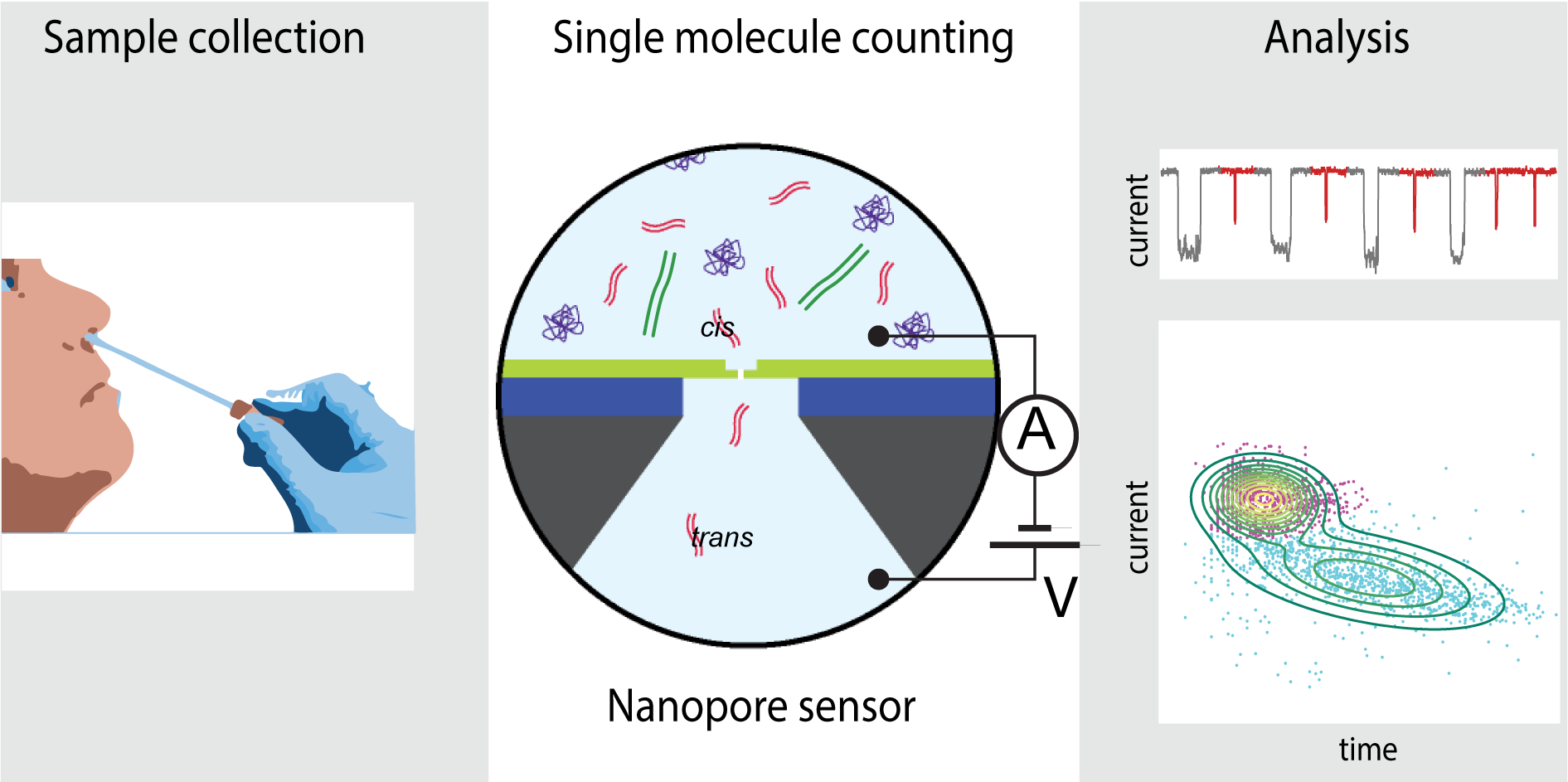Noam presented his final PhD seminar entitled "Single-Molecule Protein Sensing for Early AMD Diagnosis”
In his seminar, he talked about the use of single-molecule sensing technology for early detection of age-related macular degeneration (AMD), a leading cause of vision loss in older adults. Unlike traditional methods that detect physical damage, this approach analyzes molecular biomarkers like VEGF and Clusterin with high precision. Single-molecule techniques, such as nanopore-based sensors or dynamic sensing using nanoparticles, allow real-time tracking of individual protein interactions, enabling ultrasensitive detection at subfemtomolar levels. These methods improve diagnostic accuracy by identifying molecular changes before significant vision loss occurs, paving the way for earlier intervention and personalized treatments. This innovation could transform AMD management, reducing its socioeconomic impact and enhancing patient outcomes.
Check out the recent highlight of Our Nano letters paper featured in Advance in Engineering
Surfing the Nano Wave: Dramatic Leap in DNA Sensing with Surfactant-Coated Nanopores
The online platform of Advances in Engineering has showcased our recent Nano Letters article, titled "Over 30-Fold Enhancement in DNA Translocation Dynamics through Nanoscale Pores Coated with an Anionic Surfactant''.
Read the highlight here
Read the paper here
Neeraj Soni talk at Indian Institute of Technology Mandi
Neeraj Soni, PhD student in Meller lab visited IIT Mandi and presented his PhD work , in which he talked about the feasibility of whole protein identification and sequencing through sub 5nm solid state nanopore.
Neeraj extensively discussed the biophysical characteristics associated with the single-file translocation of whole proteins, underscoring its importance in contrast to traditional methods. Additionally, he delved into inventive strategies for regulating the dynamics of the translocating molecule as it passes through nanopores.
Welcoming our new PhD student Rohan Lamba
Today we welcomed Rohan Lamba to our lab. Rohan Lamba is a new PhD student in our lab. he completed his MSc degree in Chemistry from Indian Institute of Technology (IIT) Mandi. He will be joining our Nanopore team.
We keep on smiling, hoping for great new year 2024.
Meller lab won the 2022 MOST Sweden-Israel award.
Prof. Meller is among the recipients of this year’s awards - The MOST Sweden-Israel award with his colleagues at the Royal Institute of Technology, to develop novel plasmonic nanopore sensors for clinical bio molecular markers.
Our paper on SARS-CoV-2 sensing is out in Nanoscale journal.
In our research, we introduced solid-state nanopore sensing using a compact microfluidic device for label-free quantification of SARS-CoV-2 RNA in clinical nasal swab samples. This research was conducted in Prof. Meller’s lab in collaboration with Dr. Ronit Almog and her staff in the epidemiology unit in the Rambam Medical center. We graded nasal swab samples from >15 subjects and found that the SARS-CoV-2 radiometric nanopore index correlates well with the reported RT-qPCR threshold cycle for positive classified samples. Remarkably, nanopore analysis also reports quantitative positive outcomes for clinical samples classified as negative by RT-qPCR, suggesting that the method may be used to diagnose COVID-19 in samples that may evade detection.









